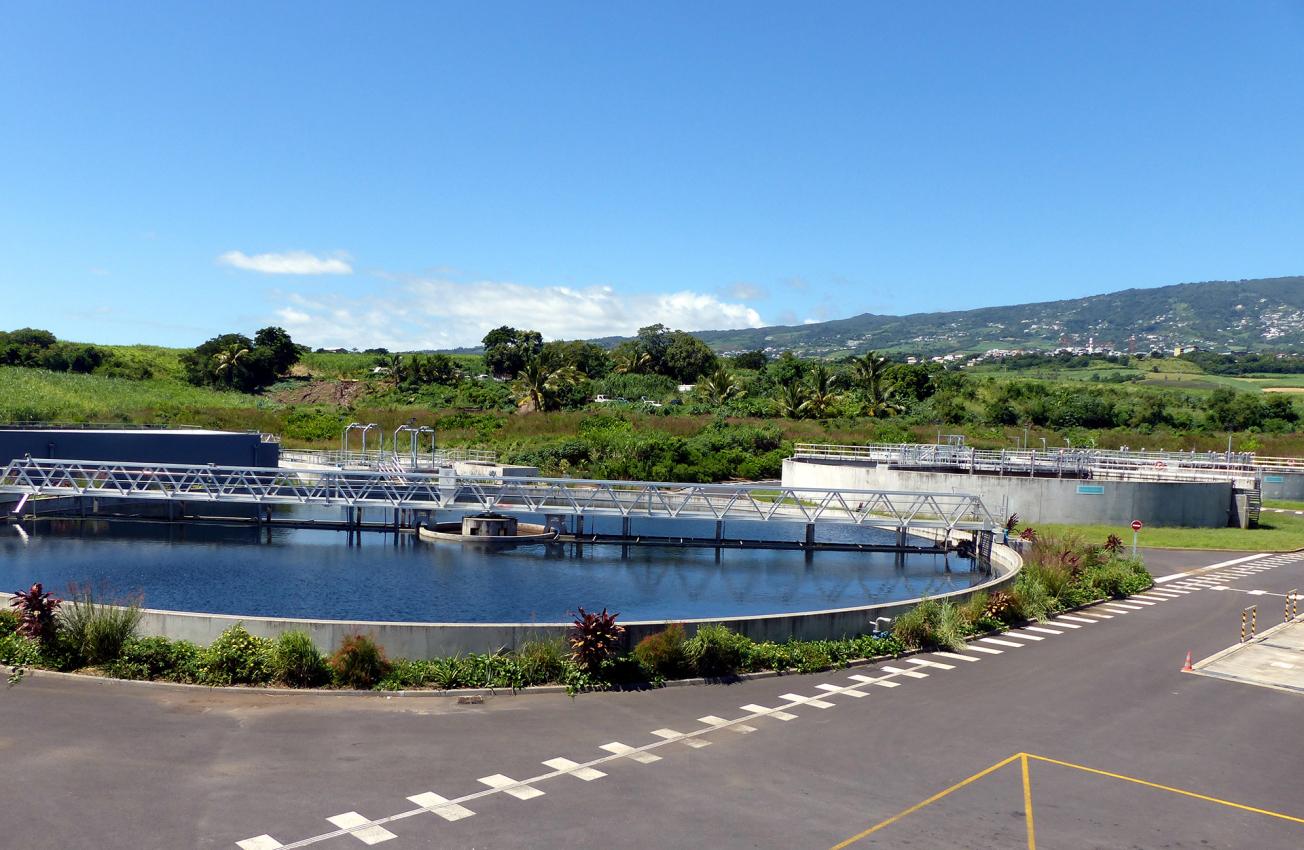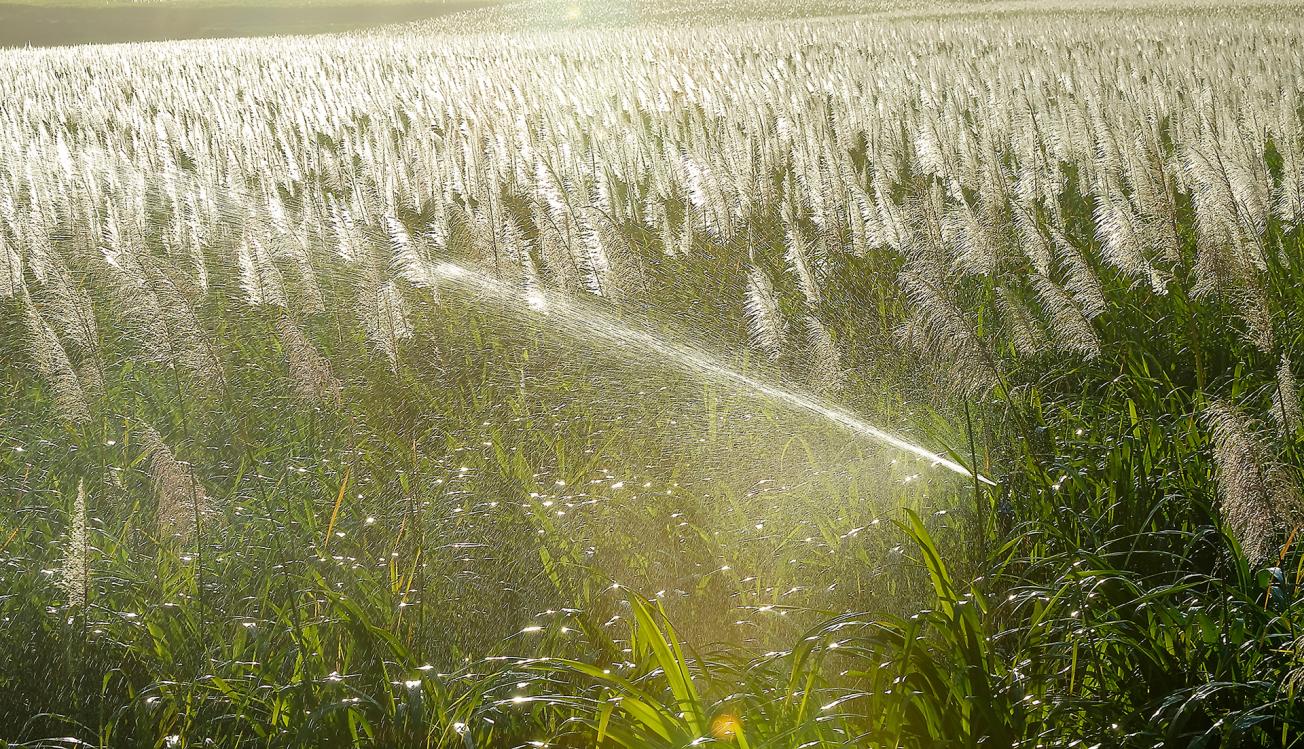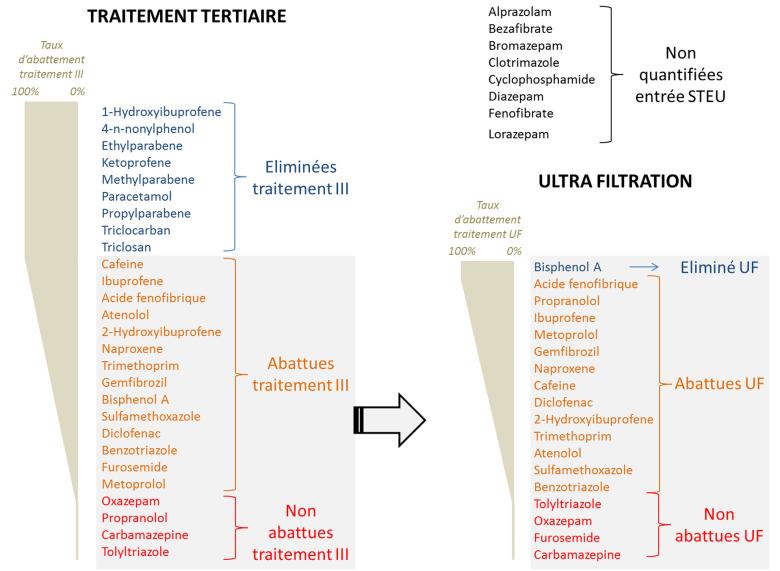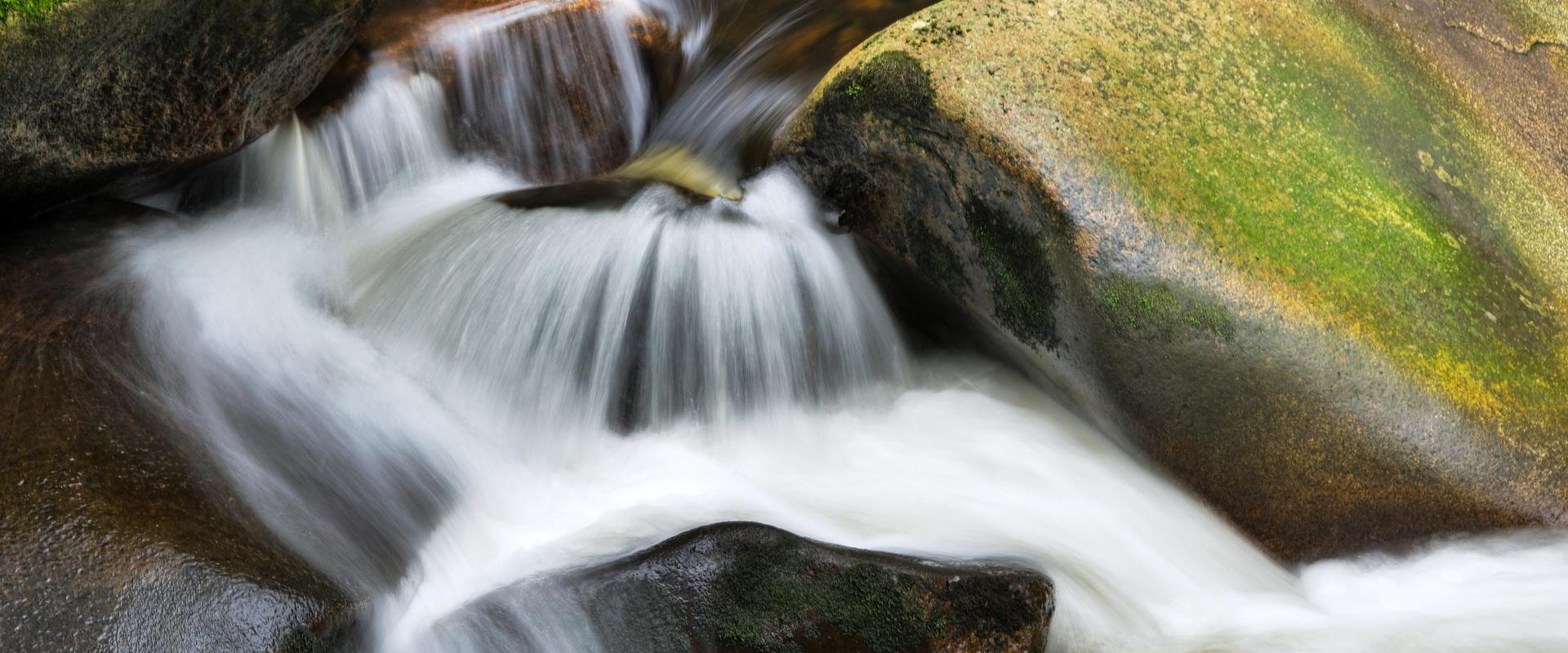
MicroReuse: Sugar cane irrigation and aeration basins at the Grand Prado wastewater treatment plant, Sainte-Marie, Reunion Island.
© René Carayol and BRGM
The need
The Departmental Council of Reunion Island advocates the irrigation of sugar cane with the aim of increasing agricultural yields in the North-East of the island. In order to reduce the pressure on water resources, the intention was to use part of the treated water from the newly built Intercommunal Community of Northern Reunion (CINOR ) wastewater treatment plant (WWTP) for this purpose.
However, although regulations allow the reuse of water, emerging pollutants, such aspharmaceutical residues, industrial products and everyday products in the water are an obstacle to acceptance of this practice. Consequently, BRGM and CIRAD (agricultural research for development) conducted a scientific research project to study the reduction and phytoavailability of micropollutants from treated wastewater. Phytoavailability is not an issue since sugar cane undergoes an extensive transformation process between the harvesting of the stalks in the field and the production of sugar at the factory (unlike vegetable production, for example) during which it is possible to remove certain compounds; however, the phytoavailability must be well characterised.

MicroReuse: Sugar cane irrigation and aeration basins at the Grand Prado wastewater treatment plant, Sainte-Marie, Reunion Island.
© René Carayol and BRGM
The results
The Micro-ReUse project thus:
- mapped urban and industrial pressures on the wastewater collection network. conducted an analytical approach on the WWTP water to determine the effectiveness of the various existing treatments (it appears that the pressures on this sector are mainly urban);
- assayed 35 compounds (emerging and pharmaceutical residues) during four sampling campaigns at the WWTP inlet and outlets. Overall, the WWTP treatments degrade one third of the target compounds and reduce concentrations for another third. Finally, the treatments are not effective for the last third of the target compounds. In this respect, it appears that ultrafiltration does not necessarily bring a significant reduction compared to tertiary treatment;
- carried out a laboratory experiment to study the phytoavailability of the 9 most problematic micropollutants, i.e. for which WWTP treatments are poorly or not effective and which could potentially be present in the irrigation water. A bioaccumulation phenomenon in plants is possible for 6 of the 9 compounds tested (Atenolol, Tolytriazole, Sulfamethoxazole, 2-Hydroxyibuprofen, Carbamazepine, Naproxene);
- got feedback on wastewater treatment, in order to reduce the concentrations of the most persistent emerging compounds, aiming at coupling between membrane treatments and treatment with activated carbon.

In a context of climate change, we need global management of water resources in order to allocate them according to their uses, while educating users as well. We therefore wanted to conduct a survey on the societal acceptability of reusing treated wastewater. As a long-standing partner, BRGM has supported our experimental approach because research provides scientific answers that help overcome obstacles, and this is an asset for local authorities.

Assessment of the analyses carried out at the inlet, at the tertiary treatment outlet and at the ultrafiltration outlet of the Grand Prado WWTP.
© BRGM
Using the results
The treatment of WWTP effluents remains a technological and economic challenge with respect to emerging pollutants insofar as the usual treatments are not very effective for certain pharmaceutical residues and everyday products. The wide range of physico-chemical properties of these compounds makes it necessary to increase the number of processes to be implemented, which can lead to a poor cost/benefit ratio. The compounds to be degraded must therefore be ranked by priority according to the desired use of the final effluent and the compounds detected in the finished products.
The partners
- CIRAD
- Reunion Island Departmental Council
- CINOR







